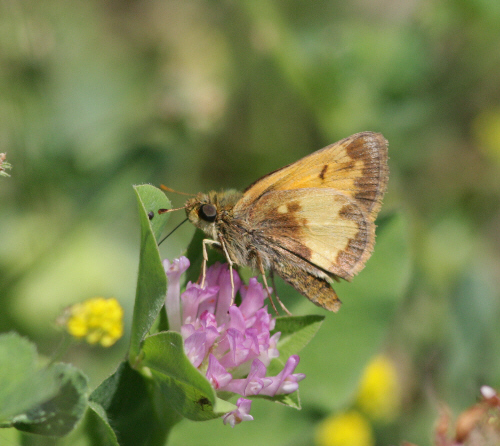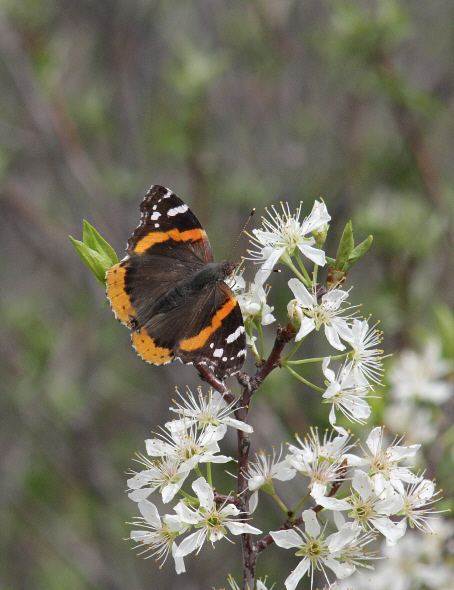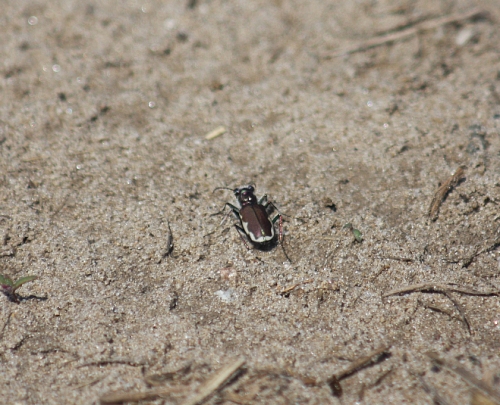It’s been awhile since I’ve posted anything, so time for a quick update. This past weekend was finally warm enough for a trip insect hunting. On Saturday, I drove south to Lucas County and was happy to see several firsts for the year.
My first odonates were several Variegated Meadowhawks (Sympetrum corruptum) at Stephen’s State Forest. Also at Stephen’s I found my first butterflies. Eastern Commas, which overwinter as adults, were out in good numbers as expected. This is a really good location for anglewings, with all three Iowa Polygonias flying here together at times.

Eastern Comma, Stephen's SF, Lucas Co, IA, 2 April 2011
Very surprising was this freshly emerged Spring Azure. This species is common at this location, but this individual is a couple weeks earlier than expected and probably a record early date for Iowa.

Spring Azure, Stephen's SF, Lucas Co, IA, 2 April 2011
I spent some time walking a nice sandy, wooded stream hoping for tiger beetles. I flushed one a couple times, but it made long flights and I could never locate it on the ground to identify it. I did find a new ‘bug’ for me and a close tiger beetle relative:

Elaphrus sp., Stephen's SF, Lucas Co., IA, 2 April 2011
This beetle of the genus Elaphrus, is shaped much like a tiger beetle but is incredibly tiny. On my screen, it would be about the length of the word “tiny”. Apparently these can’t be identified to species from photos, so we’ll just have leave it at the genus level for now.
Lastly, my second odonate of the year showed up on Sunday, conveniently enough in my backyard. It was of course, a Common Green Darner (Anax junius). This species and Variegated Meadowhawk are always the first two species to appear as they migrate in from the south as adults. Most other species overwinter here as nymphs, buried in the mud on the bottom of their stream, river, pond, or marsh, and emerge somewhat later as the water temperature warms.
Well, that’s it for now. This weekend is looking good temperature wise–hopefully the predictions of rain will be wrong.
Read Full Post »
























